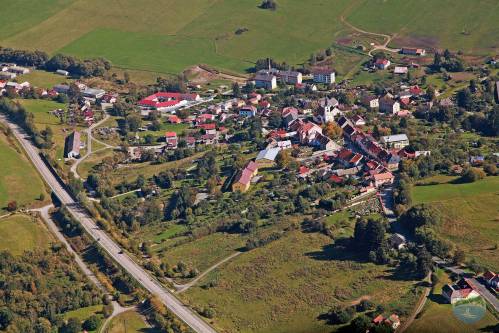
Nobody will be surprised to learn that Hořice na Šumavě is the centre of the traditional Hořice passion plays performed in their own natural theatre. Their beginnings can be dated back to 1816, when Paul Gröllhesl, with the help of a priest, wrote a new passion story, and together with other burghers they rehearsed and performed it. The play was called The Passion and Death of Our Lord Jesus Christ - a tragedy with five acts and a prelude.
In addition to the above-mentioned passion plays, it is also worth noting that the first featured movie in the Czech Republic was made here in 1897. It was a Hořice passion film shot by American filmmakers.
In 1881, street lighting was built using petroleum lamps, and in the place of today's municipal office, you will find the Museum of Radios with 115 exhibits. At the municipal office, you can also find a museum of the Hořice passion plays.
Hořice na Šumavě is simply a paradise for lovers of history and culture but also for religious travellers. There are countless cultural and historical monuments in the town. Primarily, it is worth mentioning the Church of St. Catherine (kostel Sv. Kateřiny), the Pillory with two bowls from 1549 (Pranýř se dvěma mísami), which were used for tithes and the Calvary column (Boží muka). On a hill south of the town, there used to be pilgrimage site with remains of the Chapel of Our Lady of Sorrows with God´s Grave (kaple Panny Marie Bolestné s Božím hrobem) and the cross path.
Also very sophisticated is the water supply system of the Seven Stone Fountains (Sedm kamenných kašen), which are interconnected. In former times, it was used to supply the residents with drinking water, and in case of fires, which devastated Hořice na Šumavě several times, a small pond nearby was attached to the system. Another attraction, this time a technical one, is the Railroad Culvert - a stone arched bridge on the České Budějovice - Černý Kříž railway line built at the end of the 19th century.
This place is also the perfect paradise for fans of botany, fauna and flora. Not far from the town there is Slavkovský Chlumek, where the European cyclamen grows, and Žestov, a mixed forest on limestone with many protected plant species grow, including the martagon lily and arnika montana. On the way to Černá v Pošumaví, there are the Muckov limestone quarries – the home of several species of bats, as well as of several protected plants.
The region of Hořice na Šumavě includes other villages such as Mýto, Provodice, Šebanov, Skláře and Stěžerov.



